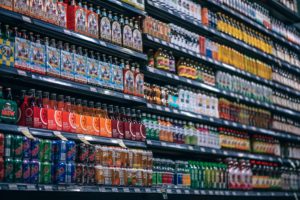

The single biggest transformation in the retail industry in the last decade has been the emergence of third party marketplaces (often online bazaars subject to few restrictions) where sellers and buyers meet. However, some sellers on online marketplaces traffic in the business of outright fake products. Others may procure merchandise through legitimate channels but engage in a gray market activity called “retail arbitrage” where shoppers buy items in stores and then resell them elsewhere. Some marketplaces that offer fulfillment services also engage in the dangerous practice of co-binning in which legitimate products can be mixed with unauthorized or counterfeit items in fulfillment centers. As eCommerce has grown, so have marketplaces. As marketplaces have grown, so has the prevalence of rogue sellers.
The headscratcher: brands have turned a blind eye toward unauthorized marketplace sellers for years. Unauthorized channels mean that customers may be shipped old or expired products (from your brands!) and that items are stored in suboptimal conditions. Price gouging or heavy discounting also create additional confusion and frustration for customers and retail partners. Who loses: your brands.
If I were the CEO of a company making disinfectant, toilet paper, or hand sanitizer, or really any other CPG product, this is what I would do immediately:
- Clean up the supply chain. The biggest reason for the gray market – and by extension retail arbitrage – is that most brands distribute goods wantonly with little downstream tracking of who gets what product to sell. You need to use eControl to clean that up because without it, sellers will simply claim immunity from the first-sale doctrine (that which allows most people, in most circumstances, to resell what they own). What is eControl? Three things: an established roster of resellers who have signed distribution agreements with specific terms (e.g. how items are stored, training), the elimination of rogue distributors, and the prosecution of violators. But that’s not enough. Brands need to also invest in item-level identification for better visibility into the chain of custody, as well as databases like a CPG version of Kelly Blue Book where facts like age of inventory is known to both customers and retailers. At the very least, brands need to create distinct packaging for different markets and different retailers to make it clear if a product has been purchased in one place only to be resold somewhere else.
- Invest in direct to consumer. This is tough. I’ve seen a number of failed pilots from the world’s largest CPG brands over the years and the vast majority of these businesses generate negligible revenue. But – done right – the upside is enormous: you can own your customer, gather data, and be less dependent on the marketplaces that exploit brands through unscrupulous means. But to do this, brands need to be much more nimble to take advantage of bursts in demand whether it is a pandemic that causes the demand for toilet paper to go up several fold, or a series of YouTube videos on slime that drive up the demand for classroom glue. Prices on DTC sites also need to be at parity with anything available elsewhere. Solutions like Shopify, drop ship software from Logicbroker or CommerceHub, marketplace facilitators like Mirakl, and fulfillment third parties like PFS Web can help companies flex their supply chains and generate their own eCommerce sales on short notice while mitigating expenses when demand is light. Also recognize that there is no shortage of eCommerce talent that brands driven by panic buying can lean on even for the next few weeks. (If you need recommendations, let me know and I’ll send you names!)
- Support legislative efforts to clean up marketplaces. Two bills in Congress may become laws which aim to put more regulations around marketplace sellers and will force accountability on the part of marketplaces. One is in the Senate, focused on sellers of children’s products, and the other is in the House and focused specifically on counterfeiters. CPG brands should lobby to support this legislation (write letters to your federal officials in support of this at the last) and even push for the expansion of restrictions on sellers of ALL consumer products. Better yet, support the overturn of Section 230 of the CDA, a long-outdated law that has provided immunity and supported large tech companies (and by extension, their rogue sellers) while holding other retailers and brands to higher product safety standards. It’s time for everyone, especially marketplaces and their sellers, to adhere to consumer safety and intellectual property laws.
The success of online marketplaces is neither inevitable, nor a good thing for consumers, brands or other retailers. Brands in particular bear an undue risk from the distribution of old, mismanaged or fake products. And this risk is a direct result of the poor supply chain governance of brands. Fix this and you will position your brand for decades of success into the future. Fail to address this and you will continue to have the terms of trade dictated by brand-eroding online sellers and retail pirates.

